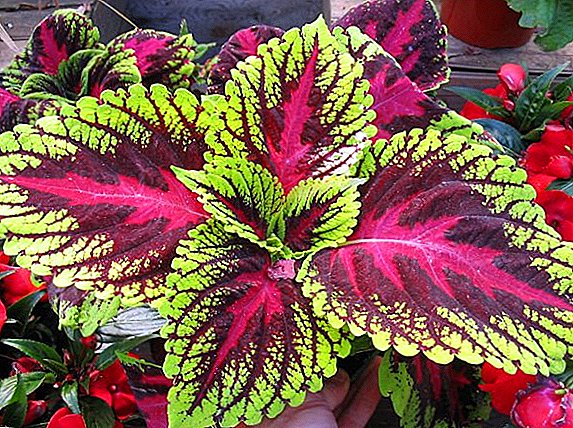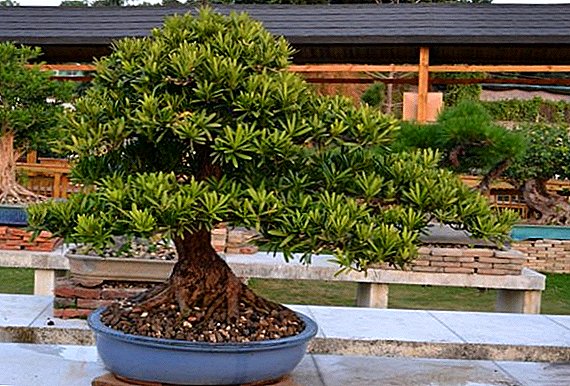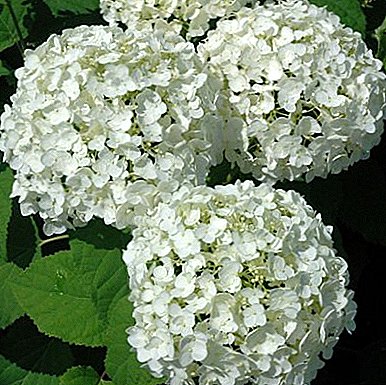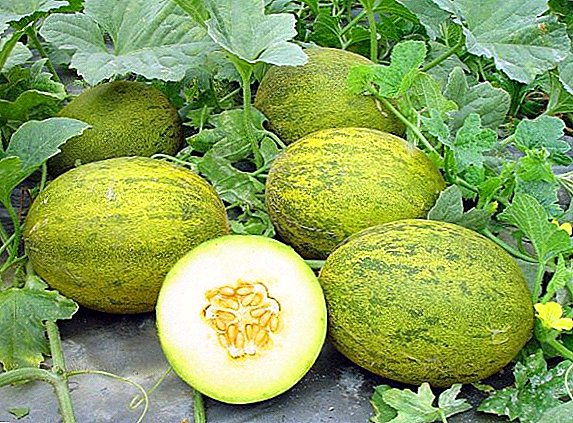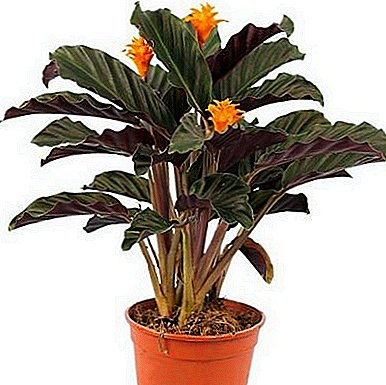
Calatheum Crocata is a graceful houseplant belonging to the family of maranths.
These natives of South America feel great in the conditions of city apartments.
Calathea is undemanding to placement, does not need special temperature conditions.
In addition, it blooms very beautifully and easily propagates, which makes the plant ideal for beginner growers.
Plant description
There are several types of Kalatheus, differing in size, shape and color of leaves. Among a number of multicolored fellows Calatheus Crocate, also called Saffron, occupies a rather modest place.
The plant can not boast a bright pattern on the leaves, they have a dark green color with lighter symmetrical stripes.
However, Saffron Calathea has an advantage - fancy yellow-orange flowerslocated on long peduncles. It is because of their bright color Crocat and got its second name.
Another blooming representative of the maranth family is Calatea Varshevich.
The plant is compact, it fits easily into any floristic composition. The leaves of the flower are very dense, juicy, shiny.
Kalatea Krokata is often grown in florariums and winter gardens, it is easy to create an atmosphere of the tropics there that is so loved by all members of the marant family.
A photo
More information on Calatea Crocate can be found in the photo below:




Home care
Let us consider in more detail the rules for home care for Calathey Crocat.
The dark green leaves of Saffron Calathea speak of her love for penumbra and diffused light.
Bright hot sun can cause burns.
However, the dense shade of the plant is not useful. In the dark corners of the rooms, Kataleya is pulled out, the leaves shrink, and flowering does not occur.
It is best to place the flower next to the window facing north-west or north-east. Calathea was born in the tropics, dry air for it is destructive.
Provide the required level of moisture will help the pallet with wet pebbles, which must be constantly sprayed.
Watering
The plant needs frequent watering. Land in a pot should not dry out.
In winter, watering decreases, but does not stop.
Every 2-3 days requires abundant spraying with warm soft water. From time to time the flower can be washed under a warm shower. The ground during the bath should be closed with a film.
Top dressing
From May to August, the flowers need a good feeding. Use complex liquid fertilizer, applying it after normal watering to avoid burning the roots.
Temperature
 Saffron Calathea is more thermophilic than her brothers in the family.
Saffron Calathea is more thermophilic than her brothers in the family.
The temperature in the room should not fall below 16 degrees, drafts are excluded.
Opening the window in the winter, remove the pot from the window sill.
Even a short-term cooling can ruin a plant..
In the summer, a flower pot can be taken out on an open veranda or balcony, but it must be returned to the house for the night.
Reproduction and transplanting
Calathea is very easy to reproduce at home. The division of the bush not only increases the number of plants, but also contributes to the active development of the parent specimen.
Most often for reproduction using strong lateral processes. They are cut with a sharp knife and rooted in a wet substrate. For better survival, you can place the appendix in the growth stimulator solution.
For planting a light mix of equal parts of sand and peat is needed.. Purchase soil for maranths will also be suitable.
Flowers are planted in plastic or ceramic pots of small size. For a better survival, the pot is covered with plastic wrap.
Growing plants from seeds is also possible.. This process is more time consuming, however, the germination of seeds of Marandian is usually quite good. Seeds germinate better in greenhouses, but you can also use deep containers covered with film or glass.
Seeds are sown without burial, sprayed abundantly with water and exposed to bright light. The soil needs to be moistened in a timely manner, and the growing-up plants should be hardened, removing the glass for several minutes every day.
After the appearance of the first leaves, young Calatheas sit in mini-pots. Further care does not differ from that which rooted shoots receive.
To Calathea actively developed, young copies are transplanted annually. Older individuals can live in the same container for 2-3 years. Transplant plants better in early spring, before the active growth.
How to make Calathea blossom?
 Many indoor plant lovers complain that Saffron Calathea, grown with love, does not want to pick up buds.
Many indoor plant lovers complain that Saffron Calathea, grown with love, does not want to pick up buds.
Regular fertilization with liquid phosphate-potassium fertilizers will help achieve flowering.that are introduced into the soil after watering at least 1 time in 2 weeks.
Stimulates the formation of peduncles and annual transplant. It is advisable to choose a container a little more than the previous one; during transplantation, an earthen clod should be kept at the roots.
In order for Calathea to blossom, it is important to monitor the indoor temperature and soil moisture.
Check whether the plant has pests that weaken the immune system.
A brighter light is needed to bloom the saffron beauty. If the room is dark, install lamps that increase daylight hours.
Benefit and harm
The main benefit of maranths is the creation of a healthy indoor atmosphere. Dense leathery leaves act as a natural filter, actively cleaning the air from dust, tobacco smoke, kitchen children and other unpleasant odors..
Demanding moisture plant perfectly moisturizes the air, increases the oxygen content in the room.
Calathea is not poisonous, it will not bring any harm to people and pets.
Diseases and pests
In the overdried air, Saffron Calatheus is struck by a scythe and spider mites.. Parasites can be seen on the underside of leaves and petioles.
The detected larvae are removed with a damp cloth, the injured flower is sprayed with a diluted insecticide.
Will help and washing the leaves with soapy water. At the time of processing the land in the pot should be closed with plastic wrap.
Dry air may cause leaf fall. Finding this, you need to immediately install the flower on a pallet with wet pebbles and conduct daily spraying of leaves from both sides.
 Decaying stems Calatheas and sluggish, drooping, dull-yellow leaves signal that the flower suffers from cold.
Decaying stems Calatheas and sluggish, drooping, dull-yellow leaves signal that the flower suffers from cold.
Remove the pot from the window by placing it in a warm, well-lit place.
Do not stop the correct watering, the ground in the tank should not dry out.
Elegant dark green Calathea Crocate will decorate any room.
But the plant must be carefully looked after, otherwise it will quickly lose its decorative effect. The flower will not remain indifferent to care, pleasing the owner with brilliance and bright color of the leaves, as well as with sunny orange-yellow flowers.


